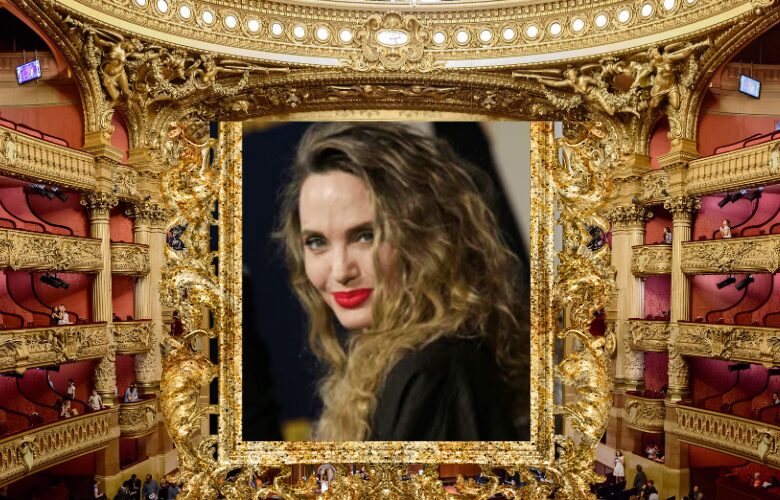Maria Callas: Industry Pros Weigh in on Angelina Jolie’s Portrayal

Maria Callas, or best known across the European continent as “La Divina”, has recently been portrayed by the famous American actress Angelina Jolie in her latest streaming movie Maria. The movie had such high potential to portray a world-renowned opera singer and what audience’s received was another tragedy that primarily focused on the worst parts of a person’s life and over dramatised a person that was put on a pedestal of their own making. While long-time admirers of Angelina Jolie praise the actress’s newest film, opera critics and industry professionals are coming together with contradictory opinions.
What Netflix Won’t Tell You
The famous opera singer Maria Callas (born name Maria Kalogeropoulou) was born to Greek parents in New York in the early 1920s. Her mother was supportive of her musical talents from an early age and had her opera debut at merely 15 after moving to Athens. From there her career skyrocketed as she toured Greece, the United States and Italy while also becoming a household name in Latin America. She became a recording legend as she reproduced nearly all of her famous roles and set off on more world tours before making her final bows in London and Paris.
Critiques
My personal opinion:
Though Angelina Jolie brings her successful name to the film, her portrayal of the legendary singer is lacking. As Jolie often does, she commands the audience from the beginning to the end with her lavish style and mannerisms. Maria Callas was not like that. Maria Callas exuded glamour but primarily with her temperament and her voice. Her altercations with politicians, managers and directors often made headlines in Europe. Seeing Jolie represent her in a way that reminds me of elegant charm is inauthentic to the person she is characterizing. I appreciate that Jolie did sing as many would not have, but her vocals were mixed with those of Callas’ making for a slightly awkward tone at points on what was expected to be a beautiful voice.
Mark Swed, the classical music critic for the L.A. Times states:
“The real Callas was striking in a different way. Her face didn’t have Jolie’s spectacularly exact proportions. In fact, Callas made herself out of what she considered to be an ugly duckling. When she first appeared onstage in the late 1940s, she immediately demonstrated a voice to be reckoned with and a fervent vocal theatricality. But she was a large woman and said to be somewhat awkward onstage. Director Franco Zeffirelli described her as big in every way — big eyes, big nose, big mouth, big body — and compared her to the Statue of Liberty…
Jolie’s voice has been slightly mixed with Callas’ in such a way that it ever so slightly sanitizes Callas’. Jolie’s speaking voice sounds almost like Callas’ but without the hint of Callas’ New York accent. She lacks, crucially, Callas’ disarming smile. None of this might matter so much had director Pablo Larraín concentrated less on supplying glamour shots of Jolie.”
A professional orchestra conductor:
“Maria Callas was technically capable. She studied relentlessly but what she brought to the table was vocal expression. She understood the feelings and the motivation behind every single word that her character was singing and she would use her voice in different ways to better express that precise emotion. On top of this she was a great actress. She was not afraid to move around if she thought her character needed it and she had an instantly recognisable voice because her tone was very particular. The colour of her voice was very distinct. The fact that her voice is so recognizable makes it kind of easy to follow in the movie when they used Maria Callas’ voice and when they mixed it with Angelina Jolie’s.”
A professional opera singer also reviewed the movie stating:
“She does not sing for most of this movie. But where it really comes up in her performance is this: Angelina Jolie is lip-syncing a lot here and it’s really well synced. If you know singing technique, there are things you will see and notice. There are movements and things that an opera singer would be doing that Angelina is not. There’s a sort of technique. Particularly from the bel canto family of techniques… Sometimes we’re missing the big operatic breaths, sometimes we’re missing the curl to the upper lip, etc… A voice that had lots of overtones, lots of harmonics and then has faded, is slightly different from a voice that is developing. To me Angelina is impressive given she only worked on classical sound to prepare for this role but it’s not how I imagine a ‘faded’ opera diva would sound and rather like an impressive adult student might sound.”
Fans of Maria Callas can find more information about her life and career on her website here.
All videos from their respective owners. Main image from Shutterstock from world premiere of Maria.
Editor's Note: At StageLync, an international platform for the performing arts, we celebrate the diversity of our writers' backgrounds. We recognize and support their choice to use either American or British English in their articles, respecting their individual preferences and origins. This policy allows us to embrace a wide range of linguistic expressions, enriching our content and reflecting the global nature of our community.
🎧 Join us on the StageLync Podcast for inspiring stories from the world of performing arts! Tune in to hear from the creative minds who bring magic to life, both onstage and behind the scenes. 🎙️ 👉 Listen now!
